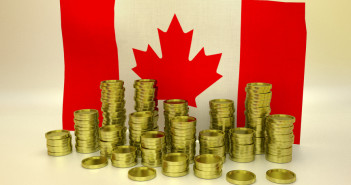Although we are still 36 hours away from “Snowmaggedon†descending on the Northeast US, it appears a state of emergency has already been declared across global markets. On Wednesday, from Japan to Germany, to the US and Canada, equities were in free fall, as investors ditch shares amid genuine growth concerns for 2016. The Bank of Canada surprisingly(?) kept rates unchanged at yesterday’s policy meeting while offering a more neutral outlook on policy – analysis below. This morning, the European Central Bank concluded their latest policy meeting to little fanfare. Commodity prices drove what was an otherwise very quiet overnight session. Oil prices, which had declined below $28 per barrel, stabilized a bit on Thursday, but much uncertainty remains.
The European session was a bit more upbeat today, after yesterday’s bloodbath. The single currency remains pinned inside an extremely tight range as we await Mr. Draghi’s 830am press conference. Today, the European Central Bank kept rates completely unchanged so Draghi’s comments now become the main event, which is usually the case. Sterling remains a sell on any rally, unable to find a boost after better than expected jobs data on Wednesday. Some comments from the Bank of Japan’s Kuroda overnight on QE has little affect as the yen remains on the bullish end. The USD/JPY rate has cratered with equities in 2016, falling to its lowest levels since this time one year ago. There have been some rumblings this week the BoJ is monitoring the foreign exchange markets closely, and today PM Abe reiterated that conditions are ripe for more easing measures. North American equities are poised to open lower after what was an exceptionally bad Wednesday.
US jobless claims kicked off the North American session at 830am. It was revealed that 293k Americans filed for first time unemployment claims during the week ending January 15th. The US dollar has performed fairly well this week, continuing to make gains against commodity currencies and even finding a boost against the euro and pound. One thing I came across yesterday which I found interesting concerned the Fed funds. The market is now only pricing in 1 hike in 2015, versus 4 on the Fed’s dot plot divulged just last month. With the slide in global equities really picking up steam, it may be difficult to justify further interest rate hikes. As well as the dollar has done in anticipation of eventual normalization, could we see the greenback sell-off as the market re-adjusts? Existing home sales and manufacturing PMI data concludes the weektomorrow.
Concerning the aforementioned Canadian dollar, it’s found a bit of buying support after yesterday’s surprise no-cut decision. As previously stated, Canada’s central bank left rates unchanged at 0.50% and offered a fairly neutral outlook in the accompanying statement. The market was split 50/50 on if we would see a hike, but judging by the immediate appreciation in the minutes after, it is clear investors were expecting some action. Mr. Poloz stated that the risks to inflation are “roughly balanced,†and the bank sees “current stance of monetary policy is appropriate.†That said, the Bank of Canada did cut 2016 GDP expectations to 1.2% from 1.4% and noted inflation shall remain well below the 2% into 2017. Further weakening for the CAD is expected this year with a risk for an interest rate cut surely to pick up steam ahead of the next policy meeting. It will be interesting to see at which point traders re-enter the market and buy USD/CAD once again.
Further reading:
European Central Bank concluded their latest policy meeting
AUD: ‘All Roads Lead To More Downside Risk’: Where To Target? – ANZ



